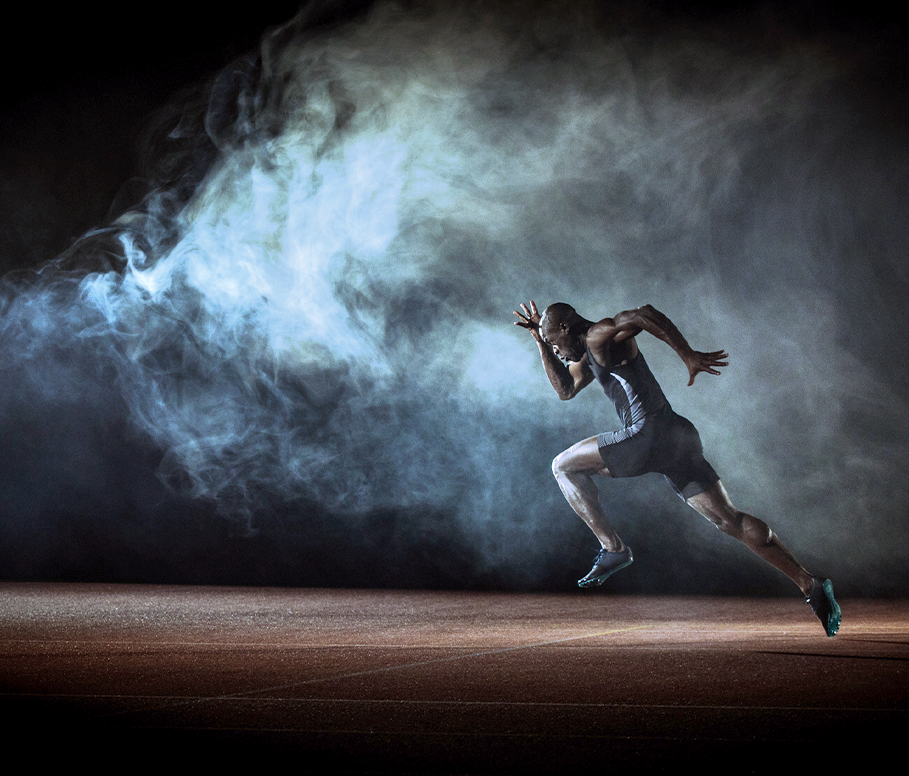In celebration of World Intellectual Property Day’s 2019 theme, we take a look at the important innovation in sports that have helped make the world of athletics more competitive, safer and engaging for participants and fans, alike.
In May 2017 much of the sports world turned its attention to an event—Nike’s Breaking2 Project—that had the potential to mark a completely groundbreaking moment in the sport of running. After three years of meticulous research, intense athletic preparation and advanced technological innovation, three of the world’s fastest runners set out to run a marathon in under two hours—a feat that some believe may never be humanly possible.
Ultimately, the winner of the race, Kenya’s Eulid Kipchoge, just missed the mark finishing in 2:00:25. His blisteringly fast time shaved nearly two minutes off the world record and represents the enormous strides that have been made in the sport over the years. It’s true that this progress has in part occurred because of increased knowledge and improved talent, many of the advances we’ve seen in running and in virtually all other sports can be attributed to innovation in the products, processes, technology and insights.
In the quest to help elite runners break the 2-hour marathon barrier, for example, Nike developed state-of-the-art shoes that were shown to help increase running speed by four percent. We now have wearable devices that give us more performance data than was imaginable even a decade ago. From mileage and steps, to heart rate and cadence—it’s all available at our fingertips or on our wrist.
Soon, access to this information may even be as simple as putting on a t-shirt. Samsung recently filed a patent to manufacturer an athletic shirt that can measure performance data and even diagnose breathing conditions. And this year Alibaba and Intel announced that a new AI-powered technology will be deployed at the 2020 Tokyo Olympics to provide a new level of performance data by extracting 3D forms of athletes in training or competition.
In addition to improving athletic performance through enhanced access to data, innovation in athletic equipment has also made pushing physical boundaries safer for athletes. For instance, last year Ridell introduced the SpeedFlex smart football helmet, which has sensors and magnets that help detect, disperse and absorb the force of impact that scientists have linked to brain injury in players. Innovative headbands are also now available for soccer players who frequently suffer concussions from collisions on the field.
And it’s not just athletes who have benefited from breakthroughs in sports technology. Today’s sports fans are able to watch and interact with their favorite teams and athletes in completely groundbreaking ways. The 3D technology that Intel and Alibaba plan to bring to the 2020 Olympics will not only help athletes evaluate their performance, it will also give broadcasters novel insights to analyze, dissect and reexamine highlights during instant replays—providing a whole new way for viewers to engage. Moreover, while we’ve already seen major leaps in sports viewership technology, such as innovations in minicams and skycams that give fans dynamic and multi-dimensional views, experts in sports technology are now promising virtual and augmented reality, that may be able to virtually transport fans to the sidelines from the comfort of their own home.
The current sports innovation atmosphere is completely transforming athletics from all angles. Today’s athletes are more tuned in to their performance and recovery and have more effective and efficient equipment and training tools, allowing them to perform to their highest potential and to do so safely. Sports fans, around the world have never been more engaged and the level of access to the games and athletes they support is unprecedented.
This innovation has been made possible through robust incentives and strong intellectual property systems that encourage and protect inventors, allowing them to bring their ideas to life. This year on World Intellectual Property Day, we’re proud to join the global community in celebration of the innovation that continues to allow athletes, coaches, trainers and fans to perform and engage in new and powerful ways.


